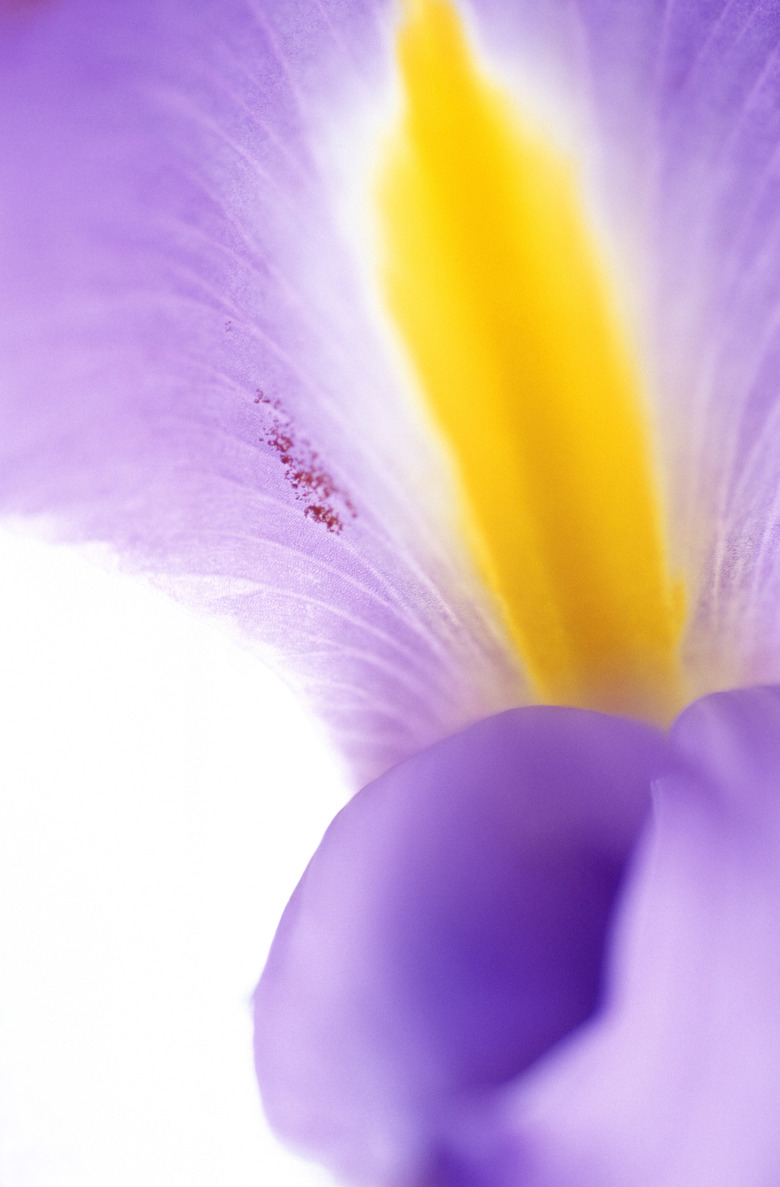What Makes An Allele Dominant, Recessive Or Co-Dominant?
Ever since the classic pea plant experiments of Gregor Mendel, scientists, physicians, and farmers have been researching how and why traits vary among individual organisms. Mendel showed that a cross of white- and purple-flowered pea plants didn't create a mixed color, but rather only purple- or white-flowered offspring. In this case, purple is a dominant trait, controlled by the purple-color allele for the flower color gene.
Genes and Alleles
Genes and Alleles
A gene is a stretch of DNA that codes for a protein. An organism's traits are largely determined by the individual's genes and resulting proteins. Genes occupy specific locations along the long DNA molecules at the heart of chromosomes. Each species of organism has a set number of chromosomes. Organisms that reproduce sexually have two sets of chromosomes, one set from each parent. For example, a pea plant has 14 chromosomes, or seven pairs, including a pair of chromosomes with genes that specify flower color. The matching genes on a pair of chromosomes are called alleles.
Allele Relationships
Allele Relationships
A pair of alleles can interact in different ways. A dominant allele masks the traits specified by a recessive allele. In the pea flower example, purple is dominant over white. The dominant allele expresses proteins that result in the purple color. These proteins dominate over the white-flower proteins produced by the sister allele. Allele relationships are situational. For example, the purple color might be recessive to another allele, such as one that codes for the color yellow. Co-dominant alleles have equal influence, creating an expression of both traits. For example, if purple and white flowers derived from co-dominant genes, the resulting offspring might have flowers with white and purple spots.
Probabilities
Probabilities
The presence of a dominant-recessive relationship among a pair of alleles can be demonstrated by the probabilities of different traits in offspring. For example, consider a purple-color allele, P, in a plant crossed with a plant having white flower color, W. The resulting offspring can have any of three possible allele combinations: PP, PW, and WW. Only the WW plant will have white flowers, because W is recessive to P. The likelihood of a three combinations are 25, 50 and 25 percent, respectively. Therefore, the chances of a obtaining purple-flowered offspring is 75 percent.
Other Relationships
Other Relationships
Another allele relationship, incomplete or semi-dominance, is distinct from co-dominance. If purple and white flower colors are from semi-dominant alleles, a PW offspring would be colored light purple, a mix of the two traits. Co-dominance would have yielded spotted flowers instead. Epistasis is an interaction among alleles of different genes. For example, a plant species might have one pair of alleles for color and another pair for color expression. If a plant has two recessive genes for color expression, the flower color will be white, no matter what the makeup of the color alleles.
Cite This Article
MLA
Finance, Eric Bank, MBA, MS. "What Makes An Allele Dominant, Recessive Or Co-Dominant?" sciencing.com, https://www.sciencing.com/allele-dominant-recessive-codominant-16896/. 24 April 2017.
APA
Finance, Eric Bank, MBA, MS. (2017, April 24). What Makes An Allele Dominant, Recessive Or Co-Dominant?. sciencing.com. Retrieved from https://www.sciencing.com/allele-dominant-recessive-codominant-16896/
Chicago
Finance, Eric Bank, MBA, MS. What Makes An Allele Dominant, Recessive Or Co-Dominant? last modified March 24, 2022. https://www.sciencing.com/allele-dominant-recessive-codominant-16896/
